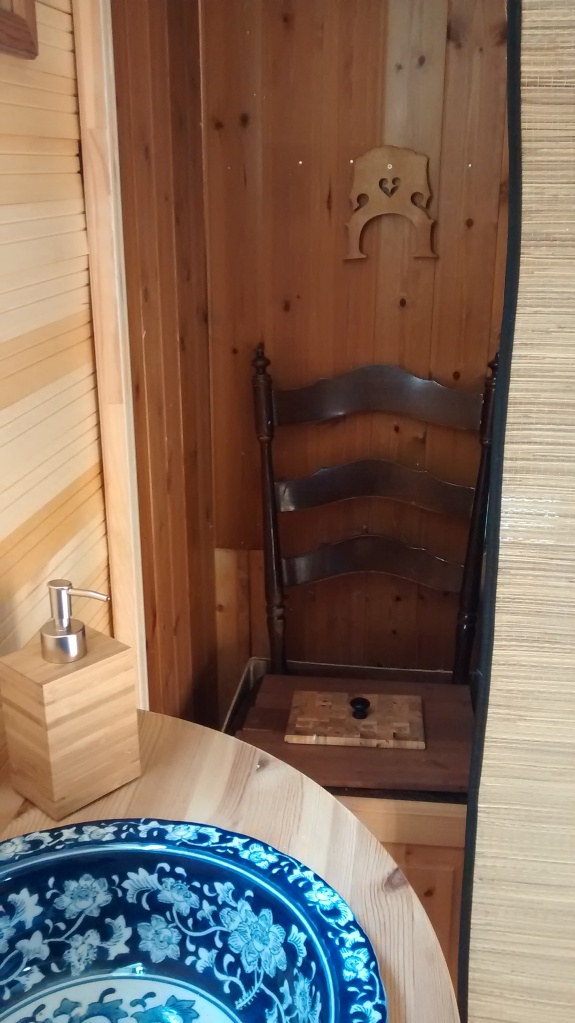One of my main inspirations in building my house is ‘In praise of shadows’ by Junichiro Tanizaki. In this text from 1933 he describes the subtle delights of the japanese tradition for leaving things to mystery and imagination in contrast to the western obsession with absolute illumination of everything. In this case he speaks on the subject of architecture, but his observations are quite translatable to other parts of existence as well.
At the beginning of his book, Junichiro has a whole section on the toilet. The traditional japanese toilet is set aside from the house, and is, at least by the author, presented as a quiet place of beauty and tranquility, as ‘ No words can describe that sensation as one sits in the dim light, lost in meditation or gazing out at the garden.’ He goes on to stating that, while the white porcelain the western toilet certainly proves its cleanliness ‘what need is there to remind us so forcefully of the issue of our own bodies?’.
And here I quite agree. The western water-closet is garish and harsh on the eyes, skin, ears and very often, nose. The light is hard and excessive, the cold surfaces dead to the touch, the sound of the water sloshing against the porcelain a strain on the recently awoken ear in the morning and the scent used in detergents and air-fresheners to choke on. I have tried as far as possible to take this into consideration when designing my own toilet. I have for reasons of mobility decided on a dry compost toilet, basically woodchips in a bucket to be emptied out with regular intervals.
In this case, I have woodchips mixed with chicory gathered in biodegradable, breathing compost bags. The toilet bucket is placed within a modified chair, inspired by the travelling toilet of Kaiser Wilhelm the II, which I had the joy of beholding at Fleischer’s hotel last year. This is a somewhat less stately version. So far. We’ll see where the years take me.
The lid is inlaid with juniper wood, one of my favorite scents, as a natural air freshener, and the ceiling above is laid with leather to prevent unpleasantness from reaching the alcove overhead. All in all, I have gone for types of wood that are natural antiseptic, dries out fast and have a pleasant smell. My original idea was to rebuild an old camphor-chest, but I discovered that I don’t actually like the smell of camphor wood.
The thing to really watch for with these types of toilets, is ventilation. The dry toilet needs to be kept precisely dry. I have a ventilation system in the wall behind the chair, and I’ve insulated the walls with hemp. I’m quite curious to find out how this will work out over time, what modifications and changes I’ll have to make or if I’ll go running back to running water.


